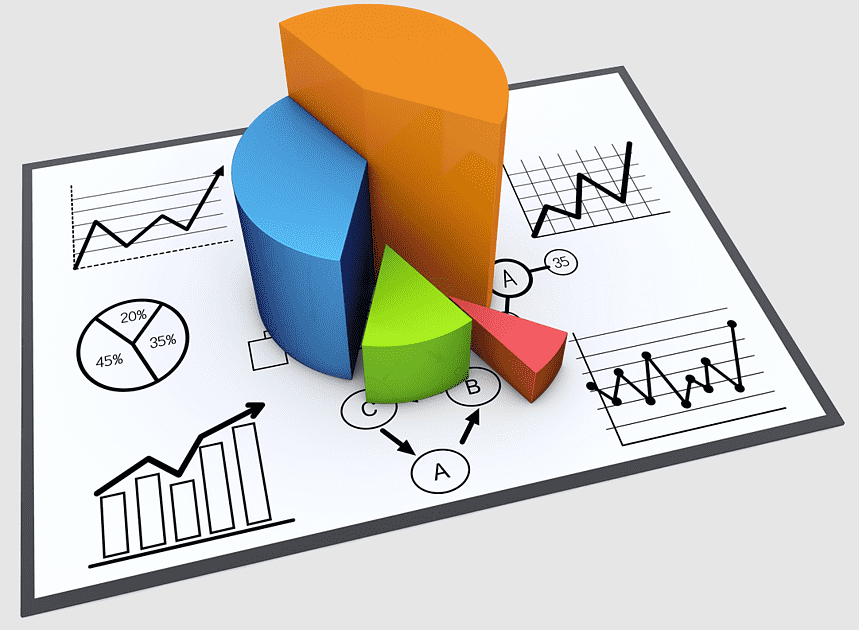Financial data analysis provides a detailed understanding of a company’s economic well-being by examining revenues, expenses, profits, investments, and risks. As markets evolve and stakeholders demand transparency, organizations must leverage analytical tools and methods to gain deeper financial insights, streamline operations, and reinforce their strategic planning.
This second perspective on financial data analysis focuses on the importance of integrating advanced technologies, adopting best practices, and continuously refining analytical frameworks. By doing so, companies can navigate economic uncertainty, drive value creation, and enhance long-term stability.
Advanced Prerequisites for Financial Data Analysis
- Financial Modeling Skills:
Building sophisticated models (DCF, scenario analysis) allows for more nuanced projections and risk assessments. - Regulatory and Compliance Knowledge:
Awareness of financial regulations ensures transparent reporting, audit readiness, and regulatory compliance. - Data Science Integration:
Leveraging machine learning and big data analytics uncovers deeper patterns in complex financial datasets. - Scenario Planning and Stress Testing:
Evaluating how changes in economic conditions or business assumptions affect financial outcomes enhances resilience.
What Is Financial Data Analysis ?
Beyond basic evaluations of balance sheets and income statements, refined financial data analysis integrates predictive and prescriptive analytics, advanced modeling, and real-time data feeds. It moves from static reporting to continuous monitoring, making finance teams more agile, proactive, and informed.
Why Is It Important?
- Informed Capital Allocation: Identify optimal investment opportunities and allocate resources efficiently.
- Enhanced Risk Management: Detect early warning signs of financial distress and address vulnerabilities.
- Strategic Planning: Align financial strategies with growth objectives, mergers, acquisitions, or divestments.
- Investor Relations: High-quality financial analysis fosters trust and transparency, attracting and retaining investors.
Analytical Techniques and Best Practices
- Time Series Analysis: Track performance over time, identify trends, and forecast future results.
- Benchmarking: Compare company performance with industry peers to evaluate competitiveness.
- Ratio Analysis: Use advanced ratios—like EVA (Economic Value Added) or CROCI (Cash Return on Capital Invested)—for deeper insights.
- Machine Learning Models: Apply algorithms to detect anomalies, predict defaults, or classify financial transactions.
The Enhanced Financial Data Analysis Lifecycle
- Data Integration and Governance:
Consolidate data from diverse sources (ERP, CRM, market data) under robust governance frameworks. - Advanced Data Cleansing:
Employ sophisticated techniques to ensure data quality, including outlier detection and automated data validation. - Model Building and Stress Testing:
Develop predictive models and run stress tests to evaluate financial stability under various market conditions. - Real-Time Monitoring and Alerts:
Implement dashboards, alerts, and automated reporting to respond rapidly to emerging risks or opportunities. - Strategic Review and Continuous Improvement:
Regularly revisit models, assumptions, and methodologies to stay ahead of evolving financial landscapes.
Tools and Technologies
- Financial Planning and Analysis (FP&A) Software: Tools like Anaplan or Adaptive Insights enhance budgeting, planning, and forecasting.
- Big Data Analytics Platforms: Hadoop, Spark, and cloud-based solutions handle large datasets for more robust insights.
- Natural Language Processing (NLP): Automates interpretation of financial reports, news, and market sentiment.
Strategic Applications and Use Cases
- Capital Budgeting: Evaluate potential projects, mergers, or acquisitions to ensure optimal investment returns.
- Risk Management: Predict credit defaults, detect fraudulent activities, and gauge exposure to currency or commodity risks.
- Regulatory Compliance: Ensure adherence to international accounting standards, tax laws, and reporting requirements.
- Performance Optimization: Identify low-performing product lines or business units and guide strategic pivots.
Improving Financial Outcomes
- Efficiency Gains: Automation reduces manual analysis, freeing finance teams for higher-level strategic work.
- Informed Cost Management: Detailed cost breakdowns guide targeted reductions without compromising quality.
- Scenario-Based Decision-Making: Anticipate the impact of interest rate changes, market downturns, or supply chain disruptions on financial metrics.
The Role of a Financial Analytics Expert
A financial analytics expert goes beyond traditional accounting or analyst roles. They combine technical expertise in modeling and data science with strategic thinking to derive actionable insights. By communicating findings to leadership, they influence decision-making and help steer organizations toward sustainable growth.
Refined financial data analysis positions companies to thrive in volatile economic climates. By integrating advanced technologies, embracing predictive modeling, and adhering to best practices, organizations can confidently chart their financial futures. As businesses face unprecedented challenges and opportunities, robust financial analytics capability becomes an essential part of maintaining stability and resilience.
FAQs
How do advanced analytics differ from traditional financial analysis?
Advanced analytics incorporate predictive modeling, machine learning, and real-time data, offering deeper insights and faster responses than traditional periodic reporting.
Can financial data analysis help with regulatory compliance?
Yes. Clear documentation, automated reporting, and continuous monitoring ensure adherence to standards and enhance transparency.
What skills should a financial analytics expert have?
They should possess knowledge of finance, accounting, data science, analytics tools, and strong communication abilities.
Is implementing advanced financial analytics costly?
While initial investments in tools and training may be required, the long-term benefits—improved decision-making, risk management, and efficiency—often outweigh the costs.

